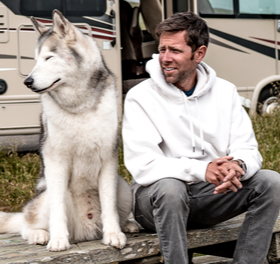What to See and Do
Hiking and Biking
South Rim Trail
South Rim Trail connects Grand Canyon Village with Hermits Rest Point. You have breathtaking views of the Grand Canyon and Colorado River along the rim. Mountain biking is allowed, but this is only recommended for experienced riders.
Length: 5.9 miles
Intensity: Hard
Bright Angel Trail
This was a common path that indigenous people, tourists, and miners took to descend the Grand Canyon. You have expansive views of the inner canyon and formations in the distance. The length of the trail depends on how far along it you want to travel. Reaching Plateau Point is a 12-mile round trip.
Length: 12 miles
Intensity: Hard
Trail of Time
Through interpretive plaques, you can learn about the Grand Canyon's geology along the Trail of Time. The trail begins at Yavapai Geology Museum, crosses through Grand Canyon Village and heads to Hermits Rest.
Length: 2.83 miles
Intensity: Moderate
Hermit Trail
Hermit Trail passes through Kaibab Formation, Coconino Sandstone, and Waldron Basin. You can see fossilized animal tracks in the lower section of Coconino Sandstone. The trail length depends on which destinations you want to see. If you plan on traveling more than 11 miles round trip, then you should prepare for an overnight stay.
Length: 19.4 miles
Intensity: Hard
Fishing and Boating
Guided Grand Canyon rafting tours are available if you'd like to enjoy the scenery while on water. You can go fishing at the Colorado River, but check regulations first to know any limitations on what you can keep. Rainbow trout, striped bass, walleye, sunfish, and catfish are popular species. You could catch other species of trout too. Another possible fishing area is at Bright Angel Creek, where you could reel in trout, striped bass, and catfish.
Climbing
At the top of a 70-foot watchtower in Desert View, you can enjoy the vast scenery that extends for hundreds of miles. It's a replica of Ancestral Puebloan towers. Mount Hayden, a sandstone spire in Nankoweap Canyon, is a popular climbing spot too.
Wildlife Viewing
More than 350 species of birds live in or visit Grand Canyon National Park, including bald eagles, peregrine falcons, and California condors. Bald eagles started spending winters by the Colorado River in the canyon after 1985. Bighorn sheep, gray foxes, mountain lions, coyotes, and mule deer are other types of wildlife that you may see. Popular wildlife viewing areas include South Kaibab Trail to Ooh Ahh Point, Bright Angel Trail, and Havasupai Gardens to Colorado River.
Picnicking
Top areas to have a picnic in the area are Yaki Point, Cedar Ridge, Desert View Watchtower, and Hermits Rest. Eagles, falcons, condors, and hawks are frequently seen in Yaki Point from late August to early November. Cedar Ridge is a plateau that shows half of the canyon below and above you. Hermits Rest features a view of the canyon over a bluff.
Scenic Drive
You can go for a scenic drive on Hermit Road from December through February. It's closed the rest of the year. The road is only seven miles long but offers beautiful views.
Mule or Horseback Riding
Guided mule and horseback rides are available along the South Rim and North Rim. You can choose a one-hour or half-day guided tour.
Railway Express Tour
You can take a train ride for a western experience while you're in the area. The train departs from the Grand Canyon and stops at Williams Train Depot. You can board the train again to return to Grand Canyon.





